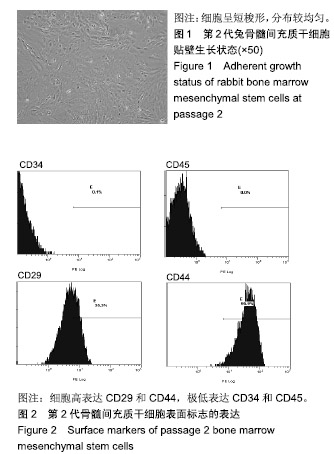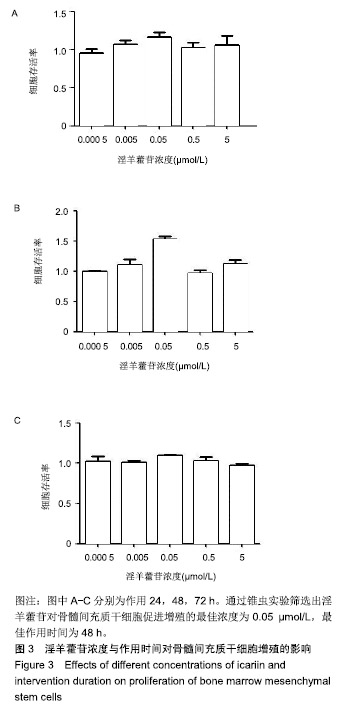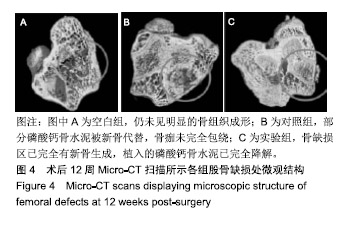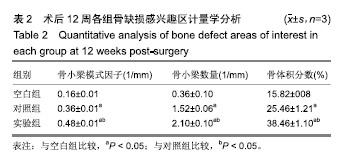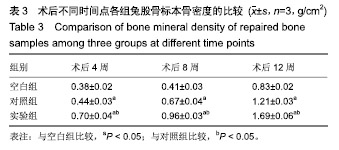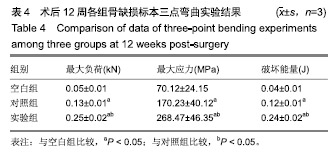| [1]Yánez A,Cuadrado A,Martel O,et al.Gyroid porous titanium structures: A versatile solution to be used as scaffolds in bone defect reconstruction.Mater Des.2018;140:21-29.[2]Yu H,Zeng X,Deng C,et al.Exogenous VEGF introduced by bioceramic composite materials promotes the restoration of bone defectinrabbits.Biomed Pharmacother. 2018;98:325-332. [3]Wang W,Yeung KWK.Bone grafts and biomaterials substitutes for bone defect repair: A?review.Bioact Mater. 2017;2(4):224-247.[4]Rezwan K,Chen QZ,Blaker JJ,et al.Biodegradable and bioactive porous polymer/inorganic composite scaffolds for bone tissue engineering. Biomaterials. 2006;27(18):3413-3431.[5]Wei G, Ma PX.Structure and properties of nano-hydroxyapatite/polymer composite scaffolds for bone tissue engineering.Biomaterials.2004;25(19):4749-4757.[6]Duan X,Guan H,Cao Y,et al.Murine Bone Marrow Derived Mesenchymal Stem Cells as Vehicles for IL-12 Gene Delivery into Ewing’s Sarcoma Tumors.Cancer.2009;115(1):13-22.[7]Ramos CA,Asgari Z,Liu E,et al.An Inducible Caspase 9 Suicide Gene to Improve the Safety of Mesenchymal Stromal Cell Therapies.Stem Cells.2010;28(6):1107-1115.[8]Bajammal SS,Zlowodzki M,Lelwica A,et al.The Use of Calcium Phosphate Bone Cement in Fracture Treatment.J Bone Joint Surg Am.2008;90(6):1186-1196.[9]Baker SB,Weinzweig J,Kirschner RE,et al.Applications of a new carbonated calcium phosphate bone cement: early experience in pediatric and adult craniofacial reconstruction. Plast Reconstr Surg. 2002;109(6):1789-1796.[10]Thein-Han W,Xu HH.Collagen-calcium phosphate cement scaffolds seeded with umbilical cord stem cells for bone tissue engineering.Tissue Eng Part A. 2011;17(23-24): 2943-2954.[11]Qiu G,Shi Z,Xu HHK,et al.Bone regeneration in minipigs via calcium phosphate cement scaffold delivering autologous bone marrow mesenchymal stem cells and platelet‐rich plasma.J Tissue Eng Regen Med. 2018;12(2):e937-e948. [12]Ding SJ,Shie MY,Hoshiba T,et al.Osteogenic differentiation and immune response of human bone-marrow-derived mesenchymal stem cells on injectable calcium-silicate-based bone grafts.Tissue Eng PartA.2010;16(7):2343-2354.[13]Song L,Zhao J,Zhang X,et al.Icariin induces osteoblast proliferation, differentiation and mineralization through estrogen receptor-mediated ERK and JNK signal activation.Eur J Pharmacol. 2013;714(1-3):15-22.[14]Cao H,Ke Y,Zhang Y,et al.Icariin stimulates MC3T3-E1 cell proliferation and differentiation through up-regulation of bone morphogenetic protein-2.Int J Mol Med. 2012;29(3):435-439.[15]Yang P, Guan YQ, Li YL,et al.Icariin. promotes cell proliferation and regulates gene expression in human neural stem cells in vitro.Mol Med Rep.2016;14(2):1316-1322.[16]Ye Y,Jing X,Li N,et al.Icariin promotes proliferation and osteogenic differentiation of rat adipose-derived stem cells by activating the RhoA-TAZ signaling pathway.Biomed Pharmacother. 2017;88:384-394.[17]Hutmacher DW,Sittinger M.Periosteal cells in bone tissue engineering.Tissue Eng.2003;9:45-64.[18]苏宝金,贝抗胜.骨膜细胞在骨组织工程中的应用[J].中国组织工程研究与临床康复,2009,13(2):349-353.[19]Guo H,Su J,Wei J,et al.Biocompatibility and osteogenicity of degradable Ca-deficient hydroxyapatite scaffolds from calcium phosphate cement for bone tissue engineering. Acta Biomaterialia. 2009;5(1):268-278.[20]Zhang X,Kang T,Liang P,et al.Biological Activity of an Injectable Biphasic Calcium Phosphate/PMMA Bone Cement for Induced Osteogensis in Rabbit Model.Macromol Biosci. 2018;18(3).doi: 10.1002/mabi.201700331[21]周常艳,周庆焕,边竟,等.骨髓间充质干细胞与磷酸钙骨水泥复合物修复兔关节软骨缺损[J].中国组织工程研究, 2015,19(8): 1195-1199.[22]胡宜成,刘鑫,沈际佳,等.犬骨髓间充质干细胞复合磷酸钙骨水泥修复骨缺损的实验研究[J].上海口腔医学,2014,23(4):402-406.[23]Li F,Gong QH,Wu Q,et al.Icariin isolated from Epimedium brevicornum Maxim attenuates learning and memory deficits induced by D-galactose in rats.Pharmacol Biochem Behav. 2010;96(3):301-305.[24]Liu B,Xu C,Wu X,et al.Icariin exerts an antidepressant effect in an unpredictable chronic mild stress model of depression in rats and is associated with the regulation of hippocampalneuroinflammation.Neuroscience. 2015;294(21): 193-205[25]吴曦,彭锐.不同浓度淫羊藿苷对人骨髓间充质干细胞成骨分化的影响[J].中国组织工程研究,2018,22(5):669-674.[26]傅淑平,杨丽,洪浩,等.淫羊藿苷促SD大鼠骨髓间充质干细胞骨向分化作用的实验研究[J].中国中西医结合杂志, 2015,35(7): 839-846.[27]Liang W, Lin M, Li X,et al.Icariin promotes bone formation via the BMP-2/Smad4 signal transduction pathway in the hFOB 1.19 human osteoblastic cell line.Int J Mol Med. 2012;30(4): 889-895.[28]Chen YJ,Pao JL,Chen CS,et al.Evaluation of New Biphasic Calcium Phosphate Bone Substitute:Rabbit Femur Defect Model and Preliminary Clinical Results.J Med Biol Eng. 2017;37(1):85-93.[29]Qiu G,Shi Z,Xu HHK,et al.Bone regeneration in minipigs via calcium phosphate cement scaffold delivering autologous bone marrow mesenchymal stem cells and platelet-rich plasma. J Tissue Eng Regen Med.2018;12(2):e937-e948. [30]Ruan SQ,Deng J,Yan L,et alComposite scaffolds loaded with bone mesenchymal stem cells promote the repair of radial bone defects in rabbit model.Biomed Pharmacother. 2018; 97:600-606. |

